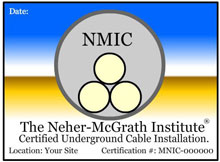Phone: (206) 499-5220
Lane Coburn and Associates
Leading Experts in Thermal Analysis and Electrical Safety
Welcome to Lane Coburn and Associates, the trusted name in providing Neher-McGrath calculations and peer reviews, all meticulously performed and reviewed by our team of professional engineers. Our commitment to precision and safety ensures that your electrical systems operate at peak efficiency and reliability.
Our Services
1. Neher-McGrath Calculation
Comprehensive Analysis: We offer in-depth Neher-McGrath calculations to determine the thermal performance of electrical cables. Our detailed analysis helps in optimizing design and ensuring the safety of your electrical infrastructure.
Advanced Methodologies: Utilizing the latest tools and technologies, our professional engineers deliver accurate and reliable calculations in line with industry standards.
2. Neher-McGrath Peer Review
Rigorous Validation: Our peer review service provides a critical second look at Neher-McGrath calculations, ensuring their accuracy and compliance. Our professional engineers meticulously review every detail to guarantee the highest level of precision.
Expert Recommendations: With a wealth of experience, our engineers offer valuable insights and practical recommendations, enhancing the robustness of your thermal management solutions.
Why Lane Coburn and Associates?
Professional Expertise: Our team of licensed professional engineers brings unparalleled expertise and knowledge in Neher-McGrath calculations and reviews.
Quality and Precision: We are dedicated to delivering top-quality services that meet stringent accuracy and safety standards.
Client-Focused Solutions: We tailor our services to meet the specific needs of our clients, ensuring optimal outcomes for each project.
Industries We Serve:
- Data centers
- Power and Energy
- Telecommunications
- Industrial Facilities
- Construction and Infrastructure
Contact Us At Lane Coburn and Associates, we are dedicated to providing exceptional thermal analysis and electrical safety solutions through our expert Neher-McGrath calculation and peer review services. Get in touch with us today to see how we can assist you in achieving your project goals with precision and reliability.
